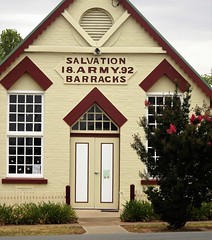Thursday, June 21, 2007
A recall issued last week for Thomas the Tank Engine toys made in China and containing lead-based paint, is the latest scare for consumers, and follows recent scandals involving Chinese-made pet food, pharmaceuticals, toothpaste and other toys, The New York Times has reported in a series of articles.
Last week, RC2, a U.S. toy company based in Oak Brook, Illinois, issued a recall for its popular wooden “Thomas the Tank Engine and Friends” train sets. The recall involved 1.5 million “Thomas Wooden Railway” vehicles and train sets sold at toy stores and various retailers across the U.S. from January 2005 through June 2007.
A subsequent recall has been issued in the United Kingdom, where Thomas the Tank Engine was originated in the 1940s as a character in a children’s story by the Reverend W.V. Awdry. Around 70,000 toys are involved in the U.K. recall, according to The Guardian.
“RC2 has determined that the surface paints on the recalled products contain lead. Lead is toxic if ingested by young children and can cause adverse health effects,” the Consumer Product Safety Commission said in a press release dated June 13. “Consumers should take the recalled toys away from young children immediately and contact RC2 Corp. for a replacement toy,” the commission said.
Those “adverse health effects” could include brain and nerve damage, especially in young children, as well as blood and brain disorders. Severe lead poisoning causes vomiting, diarrhea, convulsions, anemia, loss of appetite, headaches and in particularly high doses, coma and death.
In an article on Monday, The New York Times reported that recalls have been issued for 24 different toys in the U.S. in the past year, and every one of them was made in China. According to the Toy Industry Association, toys made in China account for around 70 percent to 80 percent of all the toys sold in the U.S., The Times said.
“These are items that children are supposed to be playing with,” Prescott Carlson was quoted as saying by The Times. Carlson is a co-founder of a child-safety website called Imperfect Parent, which tracks recalls of toys and other baby products. “It should be at a point where companies in the United States that are importing these items are held liable,” Carlson said.
RC2 would not comment to The Times, and a Consumer Product Safety Commission spokesman would not say how long ago the problem with the lead paint was discovered.
For a follow-up article on Tuesday, The Times visited a factory in Dongguan, in China’s Guangdong province, where the “Thomas and Friends” toys are made. The paper interviewed workers and took photos on the factory floor.
“You’re intruding,” a factory manager identified only as Zhong was quoted as telling the reporters. “Tell me, why exactly are you here?”
During the visit, a reporter, translator and a photographer were detained by factory officials, and released a day later after local police and government officials intervened.
The factory also produces other toys for RC2, including toy John Deere trucks, NASCAR racing models and M&M’s cars, The Times said. RC2 makes the toys under licenses from various companies. The “Thomas and Friends” toys are made under license from Hit Entertainment, which owns the “Thomas” brand.
According to RC2, items in the “Thomas and Friends” recall are:
- Red James Engine & Red James’ # 5 Coal Tender
- Red Lights & Sounds James Engine & Red James’ #5
- Lights & Sounds Coal Tender
- James with Team Colors Engine & James with Team Colors *#5 Coal Tender
- Red Skarloey Engine
- Brown & Yellow Old Slow Coach
- Red Hook & Ladder Truck & Red Water Tanker Truck
- Red Musical Caboose
- Red Sodor Line Caboose
- Red Coal Car labeled “2006 Day Out With Thomas” on the Side
- Red Baggage Car
- Red Holiday Caboose
- Red “Sodor Mail” Car
- Red Fire Brigade Truck
- Red Fire Brigade Train
- Deluxe Sodor Fire Station
- Red Coal Car
- Yellow Box Car
- Red Stop Sign
- Yellow Railroad Crossing Sign
- Yellow “Sodor Cargo Company” Cargo Piece
- Smelting Yard
- Ice Cream Factory
Toys listed that are marked with codes containing “WJ” or “AZ” are not included in the recall.
Earlier, RC2 said that customers would have to cover shipping costs to return the toys to the company. It later agreed to cover postage after angry complaints by parents, The Times said in an article yesterday. Refunds will take about two months.

